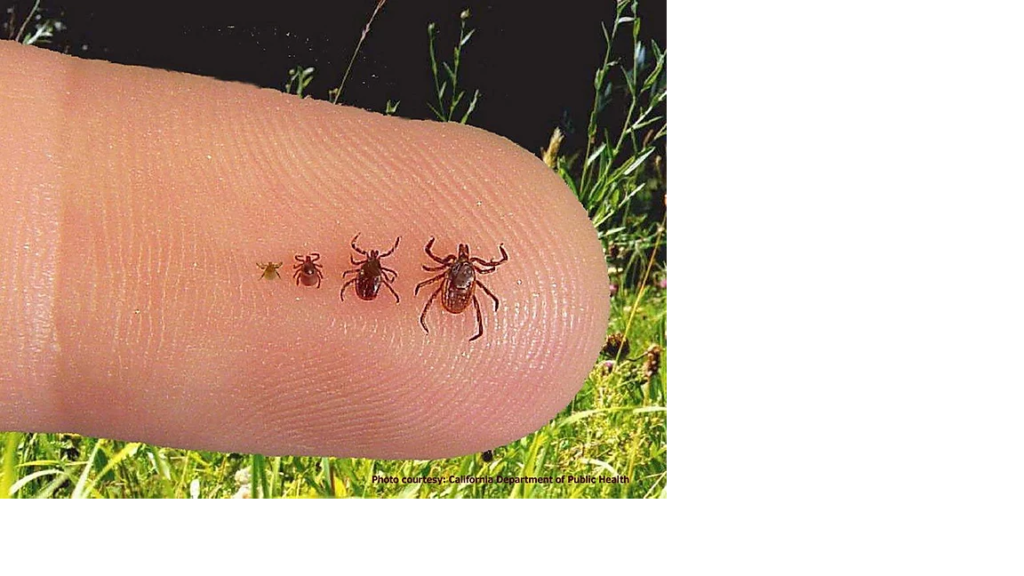Reduce your chances of getting a tickborne disease by using repellents, checking for ticks, and showering after being outdoors. If you have a tick bite followed by a fever or rash, seek medical attention.
Gardening, camping, hiking, and playing outdoors – when enjoying these activities, don’t forget to take steps to prevent bites from ticks that share the outdoors. Ticks can infect humans with bacteria, viruses, and parasites that can cause serious illness.
Diseases that you can get from a tick bite include (listed alphabetically):
- Anaplasmosis
- Babesiosis
- Ehrlichiosis
- Lyme disease
- Rocky Mountain spotted fever
- Southern tick-associated rash illness
- Tick-borne relapsing fever
- Tularemia
Other diseases that you can get from a tick in the United States include Colorado tick fever and Powassan virus.

Before You Go Outdoors
Know where to expect ticks. Ticks live in moist and humid environments, particularly in or near wooded or grassy areas. You may come into contact with ticks during outdoor activities around your home or when walking through leaf litter or near shrubs. Always walk in the center of trails in order to avoid contact with ticks.
Products containing permethrin kill ticks. Permethrin can be used to treat boots, clothing and camping gear and remain protective through several washings.
Use a repellent with DEET on skin. Repellents containing 20% or more DEET (N, N-diethyl-m-toluamide) can protect up to several hours. Always follow product instructions. Parents should apply this product to their children, avoiding the hands, eyes, and mouth.
After You Come Indoors
Check your clothing for ticks. Ticks may be carried into the house on clothing. Any ticks that are found should be removed. Placing clothes into a dryer on high heat for at least an hour effectively kills ticks.
Shower soon after being outdoors. Showering within two hours of coming indoors has been shown to reduce your risk of getting Lyme disease. Showering may help wash off unattached ticks and it is a good opportunity to do a tick check.
Check your body for ticks after being outdoors. Conduct a full body check upon return from potentially tick-infested areas, which even includes your back yard. Use a hand-held or full-length mirror to view all parts of your body. Check these parts of your body and your child’s body for ticks:
- Under the arms
- In and around the ears
- Inside belly button
- Back of the knees
- In and around the hair
- Between the legs
- Around the waist
What to Do if You Find an Attached Tick
Remove the attached tick as soon as you notice it by grasping with tweezers, as close to the skin as possible, and pulling it straight out.
Watch for signs of illness such as rash or fever in the days and weeks following the bite, and see a health care provider if these develop. Your risk of acquiring a tick-borne illness depends on many factors, including where you live, what type of tick bit you, and how long the tick was attached. If you become ill after a tick bite, see a health care provider.
Reduce Ticks in Your Yard
Modify your landscape to create Tick-Safe Zones. Regularly remove leaf litter and clear tall grasses and brush around homes, and place wood chips or gravel between lawns and wooded areas to keep ticks away from recreational areas, and keep play areas and playground equipment away from away from shrubs, bushes, and other vegetation.
Prevent Ticks on Animals
Use tick control products to prevent family pets from bringing ticks into the home. Tick collars, sprays, shampoos, or “top spot” medications should be used regularly to protect your animals and your family from ticks. Consult your veterinarian and be sure to use these products according to the package instructions.
For much more detailed information, The University of Rhode Island has an excellent website dedicated to ticks, www.tickencounter.org


